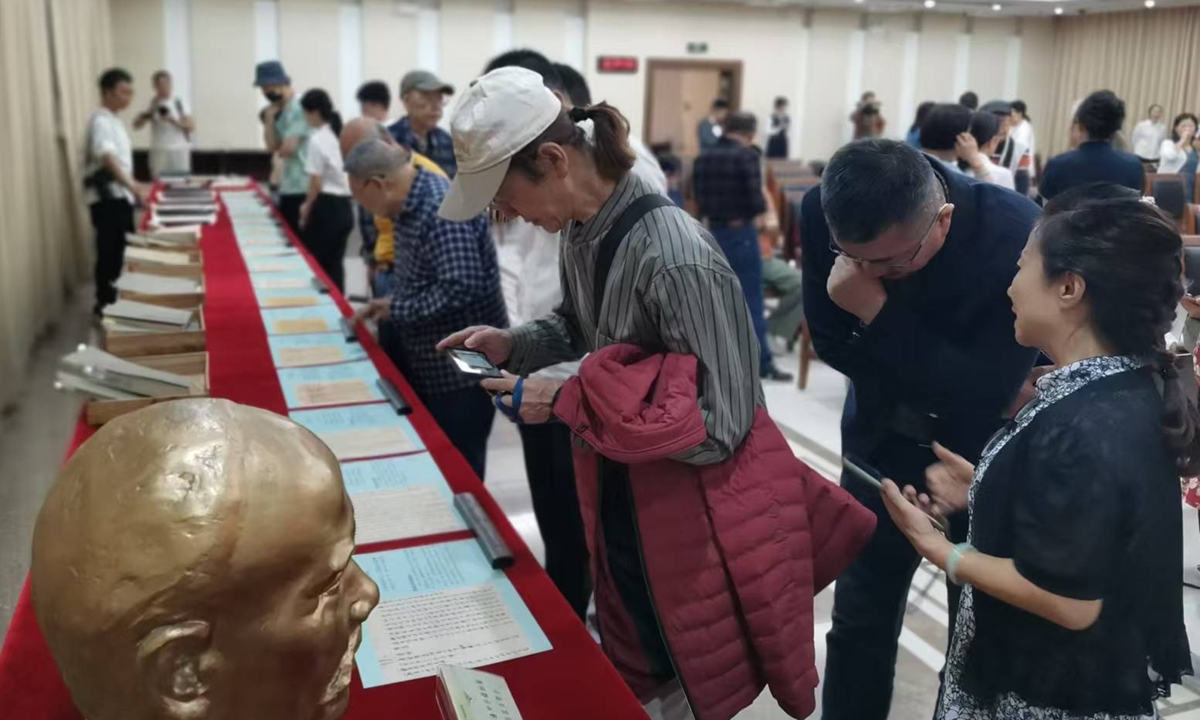
People visit the archives in South China's Guangdong Province on October 21. Photo: Courtesy of Guangdong Archives.
As the 80th anniversary of Taiwan's recovery from Japanese occupation approaches on October 25, the Guangdong Archives on Tuesday held its first dedicated event to promote a special collection of Taiwan recovery archives, showcasing 52 precious historical materials, including photographs, charts and written records, that vividly illustrate the island's restoration to China in 1945.
These materials highlight key historical moments such as preparations prior to Japan's surrender, the surrender ceremony, military takeover, and the repatriation of Japanese prisoners and civilians.
Wang Han, a staff member of the Collection and Arrangement Department of the Guangdong Archives, told the Global Times that these records "bear witness to the great historical moment when Taiwan was restored to China, capturing the overwhelming joy of Taiwan compatriots in washing away past humiliation, recording the great glory of the Chinese people once again standing proudly in the East, and also reflecting the fine traditional virtue of the Chinese nation's love for peace."
For example, the collection includes documents and charts detailing the preparations made in Taiwan before Japan's surrender. These records show how Chinese authorities ordered Japanese troops stationed on the island to register personnel and materials for handover, along with other arrangements made ahead of the formal surrender ceremony.
Charts and photographs from the archives show that the materials received from Japanese forces included fighter aircraft, military vehicles, horses, various weapons, telegraph machines, observation instruments, and medical equipment. Many of these military items were taken over in complete units along with their auxiliary facilities. Even aircraft were received together with entire airfields.
In addition, photographs of the celebrations show crowds of local residents taking to the streets to mark the occasion of the surrender ceremony. Two charts illustrate the repatriation process. Following the Potsdam Proclamation, China, guided by humanitarian principles, peacefully repatriated Japanese prisoners of war and civilians.
Before their return, the Japanese detainees and civilians were provided safe and hygienic accommodations, had access to radio broadcasts and films, and were allowed to take clothing, bedding, food, and even cash with them. They also underwent health inspections to ensure their well-being. Taiwan was restored to China in 1945 when, together with people around the world, the Chinese people achieved victory in the War of Resistance Against Japanese Aggression and the World Anti-Fascist War. The restoration of Taiwan ended Japan's 50-year colonial rule over the island.
Commemorating the 80th anniversary of Taiwan's recovery is not only an occasion to honor and reflect on history, but also a powerful expression of national identity, unity, and the shared aspiration for peaceful reunification, Wang noted, when explaining the original intent of the event.
In addition to the Taiwan recovery archives, the Guangdong Archives also unveiled a collection of historical materials related to Qiu Fengjia (1864-1912), a renowned patriotic educator and a folk leader against Japanese invaders born and raised on the island of Taiwan, at the event.
Formed between 1895 and 1912, the archive about Qiu consists of 17 volumes and 19 letters - totaling 1,092 pages - including poems, essays, diaries, and personal correspondence, for a total of 1,092 pages. This is considered the most complete and systematically preserved collection of Qiu's handwritten works to date, according to the Guangdong Archives.
"By presenting Qiu's archives alongside the Taiwan recovery documents, we hope more people will learn about the patriotic hero Qiu, understand the history of Taiwan's return to the motherland, and appreciate the Chinese nation's indomitable struggle and its long-standing tradition of valuing peace," Wang told the Global Times.
















